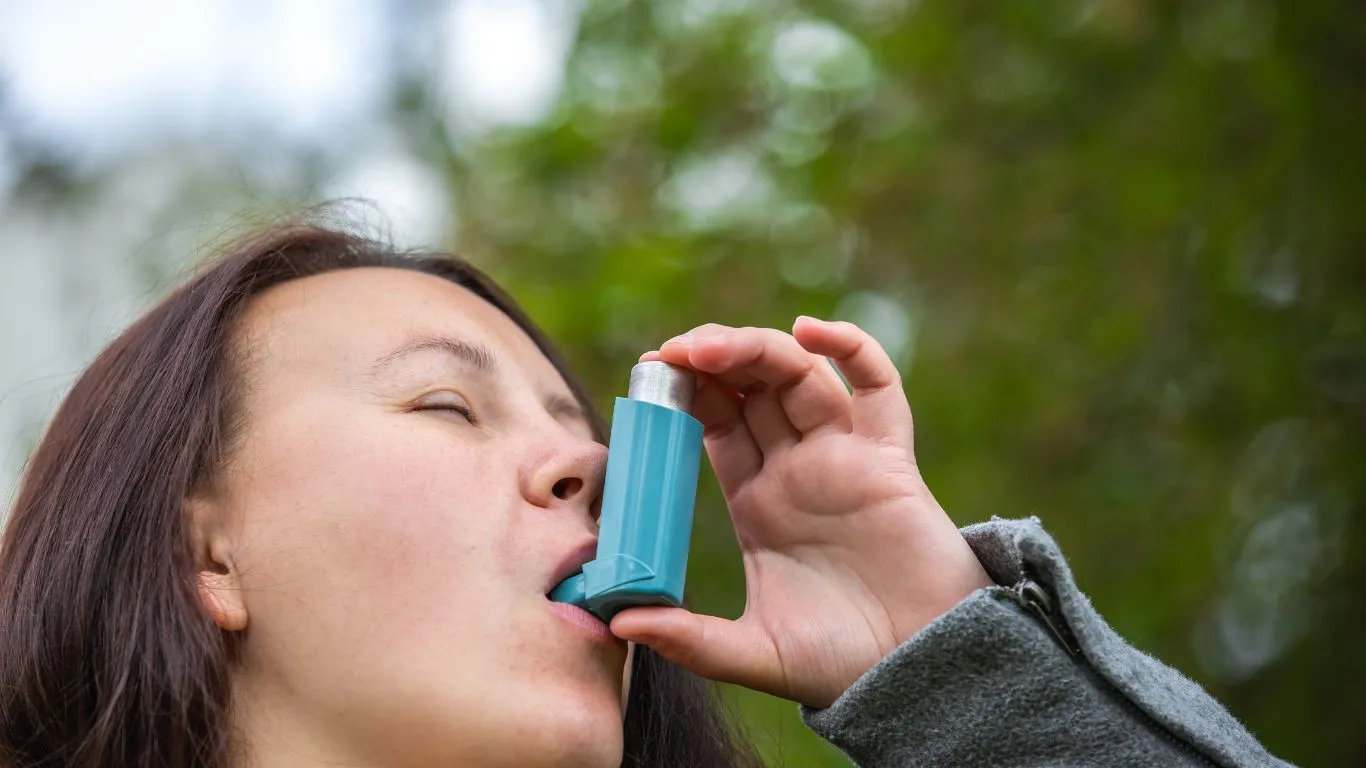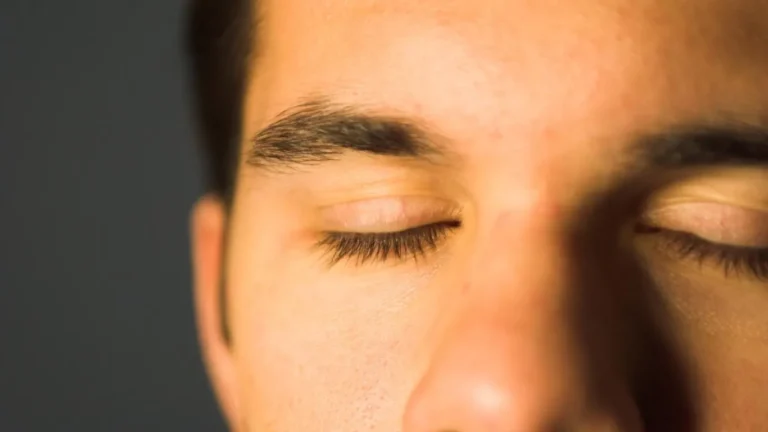How to Differentiate Asthma from Anxiety-Related Shortness of Breath
When it comes to shortness of breath, it’s easy to feel overwhelmed—whether you’re trying to figure out what’s going on with your own body or helping a patient with symptoms. One of the most common concerns is differentiating between asthma and anxiety-related shortness of breath. Both conditions can cause feelings of tightness in the chest, rapid breathing, and a sense of panic, making it tricky to distinguish them, especially if you’re dealing with someone in a stressful situation. As a Pulmonary Nurse, I’ve seen first-hand how these symptoms can be confusing, even for the most experienced healthcare professionals. So, how can we tell the difference? In this article, we’ll dive into the signs, symptoms, and diagnostic clues to help you understand how to differentiate asthma from anxiety-related shortness of breath.
Understanding Asthma and Anxiety

Both asthma and anxiety share similar symptoms, but they’re distinct in their causes and underlying mechanisms. Let’s break down what each one is, starting with asthma. Asthma is a chronic lung disease that affects the airways in the lungs, making them inflamed and narrow, which leads to difficulty breathing. Asthma symptoms often include wheezing, coughing, chest tightness, and shortness of breath, particularly during exercise or exposure to certain triggers like allergens or cold air. As someone with years of experience working with pulmonary patients, I’ve seen how asthma flare-ups can be scary and disorienting, but they are often predictable and can be managed with medication and avoidance of triggers.
On the other hand, anxiety is a mental health condition that can trigger physical symptoms, including shortness of breath. Anxiety-related shortness of breath typically happens during a panic attack or a high-stress situation, and it’s more related to the body’s fight-or-flight response. When someone is anxious or stressed, their body reacts by increasing heart rate, tightening muscles, and causing rapid, shallow breathing. However, unlike asthma, anxiety doesn’t involve physical changes to the airways or lungs. Instead, it’s a reaction to stress that manifests in physical symptoms. Recognizing the difference between the two is crucial, as the treatments for each condition are quite different.
Recognizing the Symptoms of Asthma vs. Anxiety

While both asthma and anxiety can lead to shortness of breath, the pattern and timing of the symptoms can provide important clues. Asthma tends to be more predictable. For example, if someone has been diagnosed with asthma, their shortness of breath is often triggered by specific things like physical activity, allergens, or exposure to cold air. It may come on gradually, with symptoms intensifying over time if left untreated. Asthma attacks often come with wheezing sounds or a tightness in the chest that feels like someone is squeezing your ribs. These symptoms are usually relieved with asthma medication such as inhalers or bronchodilators.
On the other hand, anxiety-related shortness of breath can be sudden and usually arises in the context of heightened stress or panic. It may happen without warning, and there might not be any physical triggers like allergens or cold air. The shortness of breath during a panic attack often feels like you can’t take a deep breath, leading to a sensation of suffocation. It’s typically accompanied by other symptoms like dizziness, increased heart rate, chest discomfort, or even a sense of impending doom. I’ve had patients in the ER who were convinced they were having a heart attack, only to find out that anxiety was the cause of their symptoms. Understanding the difference can help prevent unnecessary worry and help clinicians decide on the appropriate treatment.
How to Differentiate Asthma from Anxiety-Related Shortness of Breath

So, how do you differentiate between the two? Here are a few key things to look out for:
- Timing of Symptoms: Asthma symptoms tend to occur after exposure to known triggers like exercise, allergens, or respiratory infections. Anxiety-related shortness of breath often occurs in response to emotional stress, even in the absence of any physical triggers.
- Duration of Symptoms: Asthma attacks may last for several minutes to an hour but usually respond to bronchodilator treatment. Anxiety-related shortness of breath tends to fluctuate with emotional stress and may resolve once the panic or stress episode subsides.
- Associated Symptoms: Asthma often includes wheezing, coughing, and tightness in the chest. Anxiety-related shortness of breath is more likely to be associated with feelings of dizziness, increased heart rate, sweating, and sometimes chest pain or numbness in the hands and feet.
In my experience, the best way to differentiate is to ask the right questions and take a detailed medical history. For example, if someone reports a history of asthma, has identifiable triggers, and their symptoms improve with an inhaler, it’s likely asthma. However, if the shortness of breath is occurring in a high-stress situation and there’s no history of asthma or other respiratory conditions, anxiety may be the culprit. That said, it’s important to remember that anxiety can worsen asthma symptoms, making the distinction even more challenging at times.
Understanding the Diagnosis: How Healthcare Providers Differentiate Asthma from Anxiety

When it comes to diagnosing asthma or anxiety-related shortness of breath, healthcare providers use a combination of methods to get to the root cause of the symptoms. As a Pulmonary Nurse, I’ve had the opportunity to witness firsthand how these diagnoses are made. It’s not always as simple as looking at symptoms alone. A thorough evaluation is necessary to differentiate between the two, especially when both conditions overlap in certain ways.
For asthma, the gold standard in diagnosis is often spirometry—a test that measures lung function. During spirometry, the patient is asked to take a deep breath and forcefully exhale, and the test measures how much air they can expel and how quickly. A reduced airflow can be indicative of asthma, particularly if the results improve after using a bronchodilator (an inhaler, for instance). This test helps confirm that the issue is in the airways themselves rather than being a result of stress or anxiety. Additionally, an experienced clinician will often use patient history as an important part of the diagnosis. If the patient has a history of wheezing, coughing, or breathing problems, especially in response to known asthma triggers, it’s a strong sign that asthma is the issue.
On the flip side, when anxiety is suspected, the diagnostic approach often starts with ruling out physical conditions like asthma, heart disease, or infections. If no underlying physical cause for the shortness of breath is found, a mental health evaluation may be performed to determine if anxiety or panic attacks are to blame. A healthcare provider might also ask about a person’s stress levels, personal history of anxiety or panic attacks, and any other symptoms like dizziness, racing thoughts, or a sense of impending doom. These kinds of psychological and emotional factors give significant insight into whether anxiety is at the root of the problem.
When Asthma and Anxiety Overlap: Managing Both Conditions

One of the most challenging situations I’ve encountered as a nurse is when a patient has both asthma and anxiety. These two conditions can feed off each other, creating a vicious cycle that’s difficult to break. For example, someone with asthma may feel anxious when they experience shortness of breath or struggle to breathe. In turn, the anxiety can worsen their asthma symptoms, leading to more breathing difficulties. It’s a complicated dynamic that requires a comprehensive, multifaceted treatment approach.
If you or someone you know is dealing with both asthma and anxiety, it’s essential to manage both conditions simultaneously. For asthma, treatment typically involves bronchodilators and corticosteroids to reduce inflammation in the airways. These medications are crucial for controlling asthma symptoms and preventing attacks. But if anxiety is also a factor, medications like selective serotonin reuptake inhibitors (SSRIs) or benzodiazepines may be prescribed to help manage the anxiety symptoms. I’ve seen how a combination of treatment approaches—addressing both the physical and mental aspects—can make a huge difference in the patient’s quality of life.
It’s important to recognize that asthma treatment can help reduce stress, which, in turn, can reduce the anxiety associated with not being able to breathe. On the flip side, managing anxiety effectively can make it easier for individuals to breathe more easily, as anxiety can lead to shallow, rapid breathing that can make asthma worse. It’s a delicate balance, and addressing one condition without considering the other can lead to incomplete treatment. From my experience, the most effective treatment plans for patients with both asthma and anxiety are those that involve a collaborative effort between pulmonologists, psychologists, and other healthcare providers.
Recognizing Triggers: Asthma and Anxiety Can Have Different Roots

For anyone struggling with shortness of breath, one of the key steps in managing either asthma or anxiety is understanding the triggers that set off symptoms. Knowing what causes your breathing problems is essential in finding the right treatment and avoiding flare-ups. With asthma, triggers can be environmental—things like dust, pollen, mold, smoke, or pet dander. It can also be exercise-induced, especially in cold, dry air. I’ve had patients tell me that even a change in the weather or a brisk walk can trigger their asthma, which is why identifying and avoiding these triggers becomes a top priority for asthma management.
In contrast, the triggers for anxiety-related shortness of breath are more often emotional or situational. Stressful events, such as public speaking, work pressure, or a conflict with loved ones, can set off anxiety and lead to shortness of breath. Sometimes, even the thought of being in a stressful situation can cause anticipatory anxiety, which triggers rapid breathing and feelings of tightness in the chest. Recognizing and managing these triggers can go a long way toward preventing the onset of symptoms.
For people with both conditions, the key to managing triggers is learning to identify the ones that are physical versus emotional. A detailed log or diary can help patients track when their symptoms occur, what might have triggered them, and how they felt before and after the episode. In my nursing practice, I’ve seen how empowering patients with this kind of knowledge can be. It’s not about avoiding all triggers, but rather about understanding when they’re likely to happen and how to respond to them in a healthy way.
Managing Anxiety and Asthma: Tips for Living Well with Both Conditions

Living with both asthma and anxiety can sometimes feel like a balancing act. As someone who’s spent years working in pulmonary care, I can tell you that it’s not uncommon for patients to experience both of these conditions at the same time. It can be challenging, but it’s entirely possible to manage both asthma and anxiety with the right approach. Whether you’re a patient or someone who cares for someone dealing with these conditions, understanding the importance of managing both can make a huge difference in quality of life.
For people with asthma, the main goal is to keep the airways open and reduce inflammation to prevent attacks. For those with anxiety, managing stress and avoiding triggers is key. But when the two conditions overlap, the focus should be on creating a treatment plan that addresses both aspects. From my experience, I’ve seen how patients benefit from an integrated care plan that combines both pulmonary treatments (like inhalers and corticosteroids) and mental health strategies (like therapy and relaxation techniques).
Relaxation Techniques and Breathing Exercises

Breathing exercises are one of the most powerful tools in managing both asthma and anxiety. While asthma causes the airways to tighten, anxiety can lead to shallow, rapid breathing that makes things worse. The key is to learn how to control your breathing in stressful situations, and this is where relaxation techniques come in.
One of the most effective methods I recommend to patients is the diaphragmatic breathing technique, also known as “belly breathing.” This method involves inhaling deeply through the nose and allowing the belly to rise as the diaphragm contracts, followed by a slow exhale through the mouth. Diaphragmatic breathing not only helps with relaxation, but it can also help people with asthma by encouraging deeper, more effective breaths. Regular practice can reduce the frequency and severity of asthma symptoms, as well as lower anxiety levels. It’s simple, doesn’t require any special equipment, and can be done anywhere at any time. I’ve had patients report that it’s especially helpful during flare-ups or when they start to feel anxious.
Other useful techniques include progressive muscle relaxation and guided meditation. These practices can help reduce overall stress and anxiety levels, leading to a lessened impact on asthma symptoms. Just a few minutes of focused relaxation each day can go a long way in helping manage both conditions. And let’s face it, who couldn’t use a little more peace and calm in their life?
Medication Management: Combining the Right Treatments
When it comes to treating both asthma and anxiety, managing medications carefully is crucial. While there’s no one-size-fits-all solution, a good treatment plan often includes a combination of medications aimed at addressing both the physical and emotional components of these conditions. From my experience, the key is to work closely with your healthcare provider to find the right combination of treatments.
For asthma, medications such as inhalers (bronchodilators), corticosteroids, and leukotriene modifiers are commonly prescribed. These medications help keep the airways open and reduce inflammation, preventing asthma attacks and managing symptoms. However, when anxiety is also a factor, treating it with medications like antidepressants (such as SSRIs) or anti-anxiety medications (such as benzodiazepines) may be recommended. These medications help reduce the physical and emotional stress that could trigger an asthma flare-up.
One thing I always emphasize to my patients is the importance of consistency with their medication regimen. Missing doses or using medications improperly can make both asthma and anxiety worse. That’s why working with your healthcare provider to tailor a treatment plan that takes both conditions into account is vital for long-term success.
Physical Activity and Exercise: Finding the Balance
Exercise is an essential part of managing both asthma and anxiety. Regular physical activity can improve lung function, reduce stress, and boost overall well-being. However, it’s important to recognize that exercise can also trigger asthma symptoms if not managed properly. As someone who’s worked with many patients dealing with exercise-induced asthma, I can tell you that it’s entirely possible to stay active while managing asthma. The key is to take precautions and follow some simple guidelines.
If you have asthma, it’s important to warm up before exercising and cool down afterward. For some patients, using an inhaler before exercise can help prevent symptoms like wheezing or shortness of breath. Low-impact exercises like swimming, walking, or cycling can also be beneficial, as they tend to be less likely to trigger asthma symptoms than high-intensity activities.
For those with anxiety, physical activity can also serve as a great way to reduce stress and improve mental health. Exercise stimulates the production of endorphins—your body’s natural mood elevators—which can help manage anxiety. Whether it’s a yoga session, a jog, or simply going for a walk, physical activity helps reduce tension and calms the nervous system.
Living with asthma and anxiety doesn’t have to mean living in fear of shortness of breath or constant worry. With the right strategies in place—whether it’s medications, breathing exercises, relaxation techniques, or a balanced exercise routine—you can manage both conditions and enjoy a fulfilling life. It takes patience, trial, and error to find what works best for you, but it’s definitely worth the effort. In my experience, patients who take a proactive approach to managing both asthma and anxiety tend to see the best results. Don’t hesitate to reach out to your healthcare provider if you have concerns or if you’re not feeling like your current treatment plan is working. Together, we can make sure you breathe easier—and stress less.
For further information on asthma management, visit Health.com or learn more about mental health management at NIH.
Disclaimer: This article is for informational purposes only and does not replace professional medical advice. Always consult a healthcare provider for a diagnosis and treatment tailored to your specific needs.

Bianca Nala is a compassionate Nurse Practitioner with a strong background in primary and respiratory care. As a health writer for Healthusias.com, she combines her clinical expertise with a talent for clear, relatable storytelling to help readers better understand their health. Bianca focuses on topics like asthma, COPD, chronic cough, and overall lung health, aiming to simplify complex medical topics without losing accuracy. Whether she’s treating patients or writing articles, Bianca is driven by a single goal: making quality healthcare knowledge accessible to everyone.






